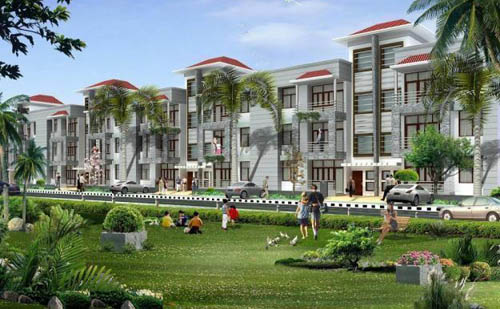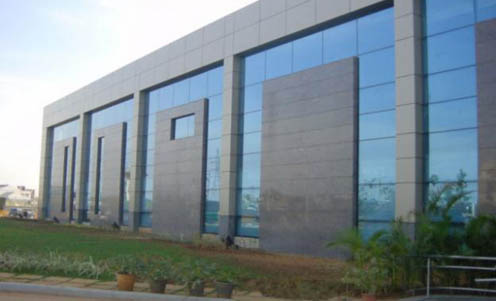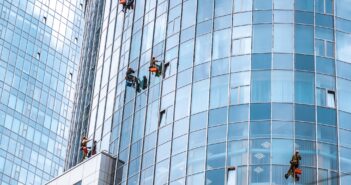
China deflating realty bubble
Chinese officials are blaming the speculators for soaring property prices and have announced to build 36 million affordable homes over the next five years.

Chinese officials are blaming the speculators for soaring property prices and have announced to build 36 million affordable homes over the next five years.

As Central Business Districts (CBD) begin to gradually lose their sheen against alternative locations because of their inability to offer Grade A buildings at competitive rates, retrofitting emerges as a preferred option (as compared with redevelopment) for quality improvement to increase the attractiveness and economic life of existing old buildings.

Realty firm Ansal API is looking at a fund infusion of about Rs 500 crore from a host of private equity investors, including IL&FS Investment Managers and Red Fort Capital, for its ongoing construction work in north India.

Bangalore continued to witness increased market activity in 4Q10. Transaction volumes have improved significantly compared to that in the previous quarter. The improvement in transaction activity can be attributed to the stabilising macroeconomic situation, positive business environment outlook and the strengthening domestic market conditions.

Residential assets were the first preference for domestic investors during Q3 2024 whereas foreign investors accounted for 64% of the commercial deals. Growing prominence of work-from-office mandates and GCCs (global capability centres) lured foreign investors, leading to an increase in the share of commercial investments from 24% in Q3 2023 to 71% in Q3 2024. On the other hand, the share of residential sector reduced to 19% in Q3 2024 from 44% in the same period a year earlier. However, investment in residential assets is expected to grow in the coming quarters as niche asset classes such as co-living, senior housing, and serviced apartments are gaining traction.

Office leasing is likely to record a historic high of ~70 mn. sq. ft in CY 2024 across top 9 cities in India as per current estimates, says ‘CBRE India Office Figures Q3 2024’. The last highest office leasing was recorded in CY 2019 at 66.6 mn. sq. ft. The office demand will be driven by both global and domestic occupiers, who are expected to continue expanding their operations and consolidating their facilities to strengthen their market presence. GCCs are poised to expand significantly in India, accounting for about 35-40% of the total office leasing.

This long-term growth in real estate is underpinned by six salient growth levers which includes, rapid urbanization, infrastructure development, digitalization, demographic shifts, sustainability and investment diversification; all of which will form the bedrock for a quantum leap in Indian real estate by 2047. These long-term growth ingredients will be pivotal in the expansion of Indian real estate – from under a trillion currently, to potentially a USD 10 trillion market by 2047, accounting for a 14-20% share in the country’s GDP.

The conference uncovered unique perspectives on how Smart Facilities Management can play a crucial role in anticipating and preventing equipment failures, reducing downtime, and optimizing resource allocation in real estate assets by adopting the latest technologies and innovations including, IoT sensors, AI-driven analytics, and machine learning algorithms, to enhance the overall performance of their real estate assets. Furthermore, better risk management practices can contribute to the longevity of assets. Regular inspections, maintenance, and upgrades can help identify and address potential vulnerabilities, reducing the likelihood of damage and ensuring the continued functionality of critical public infrastructure.

AI & Robotics companies accounted for 21% of Bengaluru’s absorption in Q2 2024, as per Vestian’s quarterly office market report, The Connect Q2 2024. Rapid global advancement of artificial intelligence, combined with a supportive ecosystem, has significantly driven the demand for office space in the city. Overall, IT-ITeS sector, including AI & Robotics, accounted for 69% of the city’s absorption in Q2 2024.

INR 3,500+ crore highest-ever recorded sales value in secondary/resale market in Mumbai with growth rate of 37% in H1 CY’24 compared to H1 CY’23. The top luxury micro-markets in Mumbai—Goregaon East, Worli, Mahalakshmi, Prabhadevi, Mumbai Central, Malabar Hill, Bandra West, Lower Parel, Tardeo, Byculla—have contributed to 80% of primary luxury sales by value in H1 CY’24. More than half of homebuyers in the more than INR 10 Crore luxury market belong to the 35-55 age category.
